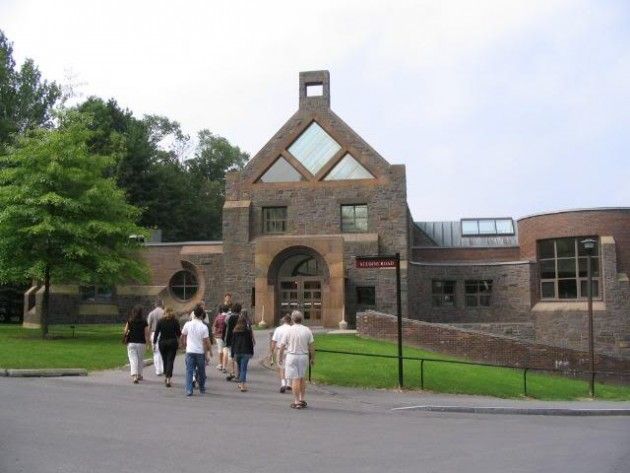Composting Club Moves Forward with Campus-Wide Environmental Initiative
Universities across America are joining in the “Go Green” movement. Colgate has made a significant effort in the past few years to reduce the Colgate’s greenhouse gas emissions. Although the university has reduced its carbon footprint considerably, Colgate still has a long way to go.
One practice many of Colgate’s peer institutions have adopted that considerably reduces greenhouse gas emissions is composting. Most people don’t realize where our trash goes when we throw it away. Consumers know it gets sent to a landfill, but what happens to it there?
Trash sitting in landfill decomposes and releases methane, a greenhouse gas that destroys the ozone layer twenty times faster than carbon dioxide. Lots of what we send to the landfill could be composted.Composting turns “trash” into organic material that Colgate could potentially use in the long run to fertilize a garden. Associate Director of Facilities and Manager of Buildings and Grounds (B&G) Mike Jasper lauds the financial offsets of composting.
“We have to weigh in and weigh out every time we go to the landfill and you can be sure food waste is a good part of that,” Jasper said. Composting food waste would significantly reduce the weight of what Colgate sends to the landfill, saving the university money.
Colgate’s Composting Club supports this cause. The club is taking big steps in the first two weeks of April with the Pilot Composting Program. During the pilot, the Composting Club will work with Frank Dining Hall and B&G to collect organic material from Frank’s pre-consumer waste such lettuce heads, vegetable peels and all the other food waste created during meal preparation. B&G will then transport the waste to a composting site at Tyler’s Field.
Located discretely in the bushes away from Colgate’s main sports fields, Tyler’s Field, or what B&G refers to as “The Old Dump,” will provide a dumping site for the compost. Once B&G dumps the food waste in the field, members of the Composting Club and B&G employees will layer the waste with bulking agents, such as leaves and grass clippings collected from Colgate’s landscaping to create a composting pile.
Once in the pile, microorganisms from the soil and the bulking agents decompose the organic food waste. The refuse will break down into fiber and carbon-rich natural fertilizer that contains inorganic nutrients such as nitrogen, phosphorus and potassium.
When most students think about composting, they ask, “Why would I want to let my trash rot in a bucket in my kitchen?” Contrary to popular thought, compost doesn’t actually smell if done correctly. If Colgate students began to support the cause by agreeing to scrape their plates in the dining halls or by collecting compost in the kitchens of their apartments and townhouses, the pilot project could become a permanent campus fixture.
The Frank staff has already committed to Colgate’s sustainability movement. Executive Chef Mike Stagnaro makes sure to reuse everything possible. The staff uses the fresh vegetable trimmings to make stock for soups and sends extra grease to the Loj at 70 Broad St., which uses it to heat the house. Ideally in the long term, Frank would begin to compost both pre-consumer waste and post-consumer waste if students agreed to separate the leftover food on their plates after meals.
All students want more variety in the dining halls. We want pineapple, grapes and strawberries at breakfast every morning, but this comes at a price. Stagnaro tries to keep students happy, considering student’s suggestions whenever possible.
“In order for me to control food costs, the one-bite apple thing has to stop.” Stagnaro said. Students have to become more aware of their waste if Frank is to meet the student body’s demands. While it may not reduce the amount of waste, composting at least ensures that extra food will not be wasted.
Colgate staff has shown their support for composting at Colgate, however turning the two-week project into a successful permanent system will require student support.







